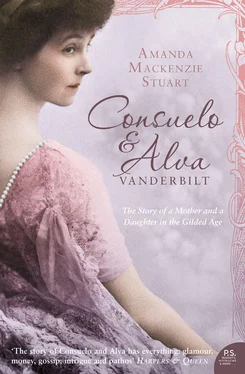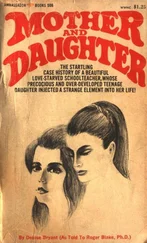A few days after his death, William Henry Vanderbilt’s will was the source of even greater astonishment than the Commodore’s. In the short time that he had been responsible for the family fortune, dogged persistence and careful control had doubled its value from about $100 million to $200 million ** . This made him the richest man in America and the poet-statisticians of New York’s newspapers went into overdrive. In gold, the estate would weigh 500 tons and would need 500 strong horses to pull it down Wall Street; if paper, it would take a man eight hours a day for thirty days to count it. The New York Sun declared: ‘Never was such a last testament known of mortal. Kings have died with full treasuries, emperors have fled their realms with bursting coffers, great financiers have played with millions … but never before was such a spectacle presented of a plain, ordinary man dispensing of his own free will, in bulk and magnitude that the mind wholly fails to apprehend, tangible millions upon millions of palpable money. It is simply grotesque.’ 70
William Henry altered his will nine times in six years, as he fretted over how best to bequeath such a legacy. He was determined to prevent the embarrassment of another will trial, and he felt strongly that the burden of such a fortune was too great for one man alone. ‘The care of $200 million is too great a load for any brain or back to bear. It is enough to kill a man. I have no son whom I am willing to afflict with the terrible burden,’ he is quoted as saying. ‘I want my sons to divide it and share the worry which it will cost to keep it.’ 71 At the same time, he appears to have been anxious to respect the Commodore’s wish that the family fortune should remain intact. Within his own family everyone was treated generously. His daughters were all given the houses in which they lived, and each of his eight children received $5 million with a further $40 million in trust for them jointly with arrangements made for grandchildren. Maria Kissam Vanderbilt, his widow, received 640 Fifth Avenue, its contents and an annual allowance of $200,000, as well as a bequest of $500,000 which she used to help her Kissam relatives. There were donations to Vanderbilt University and a range of smaller bequests. 72 However, it was the two sons with the longest experience of managing the family enterprise who received the bulk of the estate between them: Cornelius II and William K. now discovered that they had inherited about $50 million each.
Because William Henry died prematurely, his sons and daughters-in-law were unexpectedly young when they inherited his fabulous wealth. Cornelius II was only forty-two, William K. was thirty-six, and Alva thirty-two. Under normal circumstances, they would all have had to wait at least another ten years before coming into such riches. But William Henry’s early demise meant that Alva and William K. could now have whatever they wanted. The consequences for Miss Consuelo Vanderbilt were even greater. She became one of the world’s greatest heiresses at the age of nine. This gave Alva plenty time to think about her daughter’s future; and this made the impact of her grandfather’s bequest on Consuelo’s life almost incalculable.
Alva and William K. immediately reacted to the unexpected improvement in their circumstances by commissioning two new accessories: their own private yacht, the Alva , and a summer cottage in the fashionable summer resort of Newport, Rhode Island, which would become the backdrop to much of the drama ahead. At first glance it seems odd that the charming and refined colonial town of Newport, expressly founded on the principle of religious tolerance during the seventeenth century, should be the locus of titanic social struggles in the Gilded Age. The town manifests something of a split personality to this day, with elegant small colonial houses nestling together round the harbour and strenuously competitive nineteenth-century palaces on the slope above scarcely conceding existence to the throng below. The explanation for its singular history lies partly in its geography: a cool summer breeze which has always attracted visitors in search of a ‘healthy climate’ and a deep natural harbour which made it accessible to steamships from the south from the early nineteenth century. It is not surprising that Alva was brought to Newport as a child by her southern parents, nor that it should have been in Newport that she first made friends with the Yznaga family who came from Cuba and Louisiana.
For much of the nineteenth century, Newport was a holiday resort for writers, artists and intellectuals of modest means. After the Civil War however, Newport fell victim to the noisy arrival of the urban rich, ‘quick to pick up the scent and take over the land, driving up prices to push out the eggheads’. 73 The transformation of Newport into the epicentre of social warfare at its most vicious was largely the work of two enterprising speculators: Alfred Smith and his associate Joseph Bailey. Spotting an opportunity in a manner of which Commodore Vanderbilt would have been proud, this duo acquired 140 acres of land on the slope to the north of the colonial town and began to develop terrain along Bellevue Avenue, creating large tracts of building land amid broad tree-lined streets in an informal exclusivity zone. This development paved the way for competitive snootiness unparalleled anywhere in America. In the hitherto smart resort of Saratoga, for example, society stayed and entertained in hotels, making it easier for those on its fringes to find a foothold. In Newport, on the other hand, rich families built their own ‘summer cottages’ on Smith and Bailey’s land, while those who could not afford it were kept out. 74
The summer cottages of Newport were, of course, nothing like cottages at all. Those that remain range from the elegant, to the ludicrous, to the very slightly mad. Henry James famously described them as ‘white elephants … all cry and no wool … They look queer and conscious and lumpish – some of them, as with an air of brandished proboscis, really grotesque.’ 75 Several of the most famous were designed by Richard Morris Hunt. Uncle Cornelius Vanderbilt II’s house, The Breakers, had seventy rooms; the gardens of The Elms required twelve gardeners simply to keep them in order; and every Gilded Age cottage along Bellevue Avenue had a ballroom large enough to accommodate several hundred guests. This was the point of being in Newport in the first place. Even allowing for the appearance of the Casino (where one played tennis or croquet, rather than gambled) and swimming at Bailey’s Beach, the focus of activity during Newport’s short summer season was private entertaining by society figures, creating a vicious circle – or a virtuous one, depending on your point of view – of aristocratic exclusivity.
It only took the arrival of a few rich society families in Newport in the post-war years to attract others, turning Newport for a few brief weeks in July and August into New-York-by-the-Sea. By the end of the nineteenth century almost every wealthy family of the industrial age had established some kind of presence there. ‘They were the Astors, the Vanderbilts, the Morgans, the Paran Stevenses, the Lorillards, the Oelrichses, the Belmonts, the Goelets, the Fishes, the Havemeyers, the Burdens … There were several hundred of them in Newport in any one summer season – a magical inner circle of those powerful few who called the social tune and those newly arrived families who desperately danced to it.’ 76 Even for its aristocrats, Newport was anything but a holiday. For six short weeks the social competition of New York was transferred to the seaside, twisted, condensed and inflated. By 1890 the unwritten rules of competitive display required a twice-daily appearance in a phaeton on Bellevue Avenue in a different dress, a swim at private Bailey’s Beach from one’s own cabana (one of the least pleasant beaches in Newport by all accounts), luncheon on a yacht moored in the harbour, or a fête champêtre at a farm, attendance at the polo field, dinner and a further change of costume, then a ball at the Casino or, if one was of the elect, in a summer cottage on Bellevue Avenue. A season could require over ninety new dresses. 77
Читать дальше












